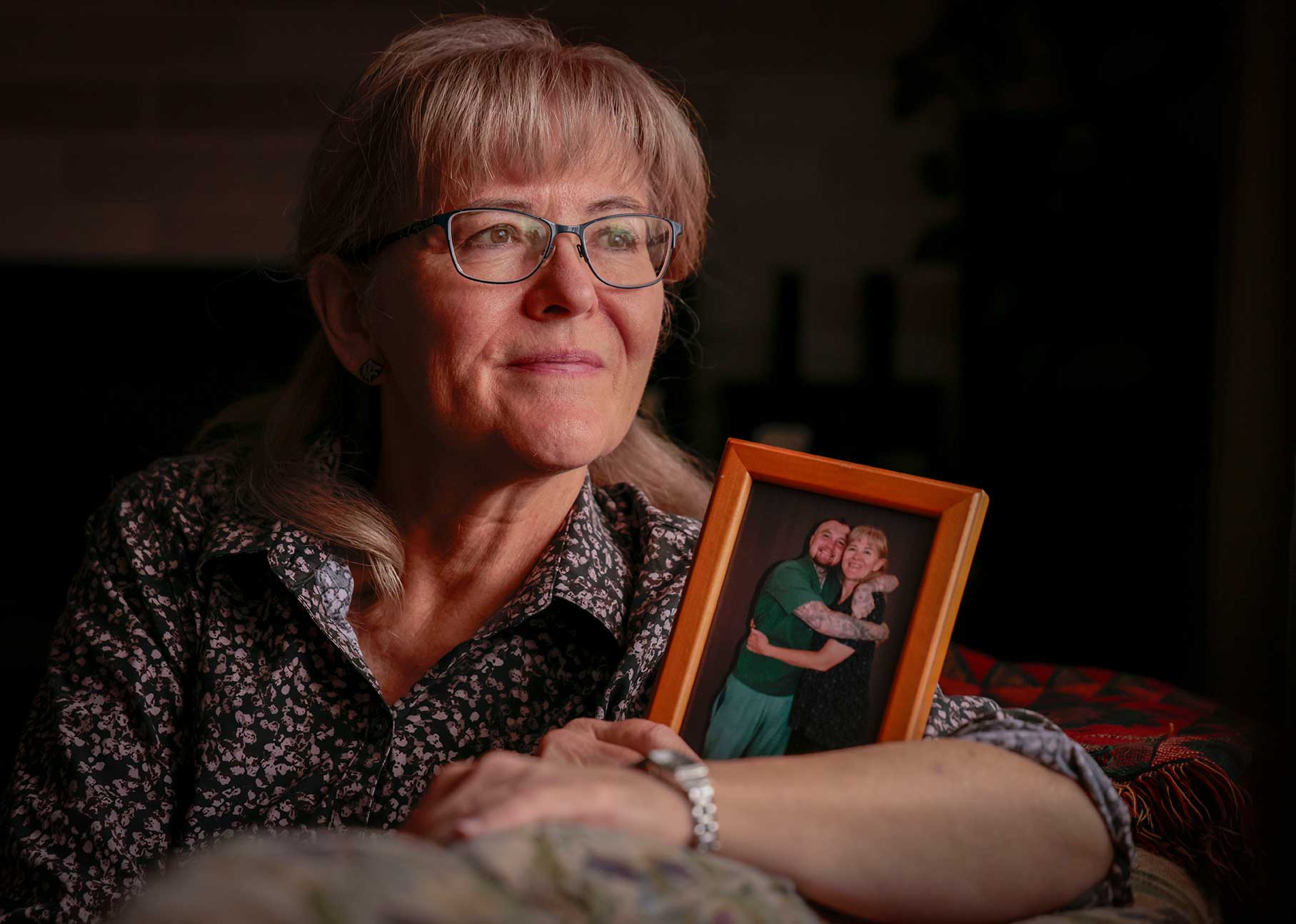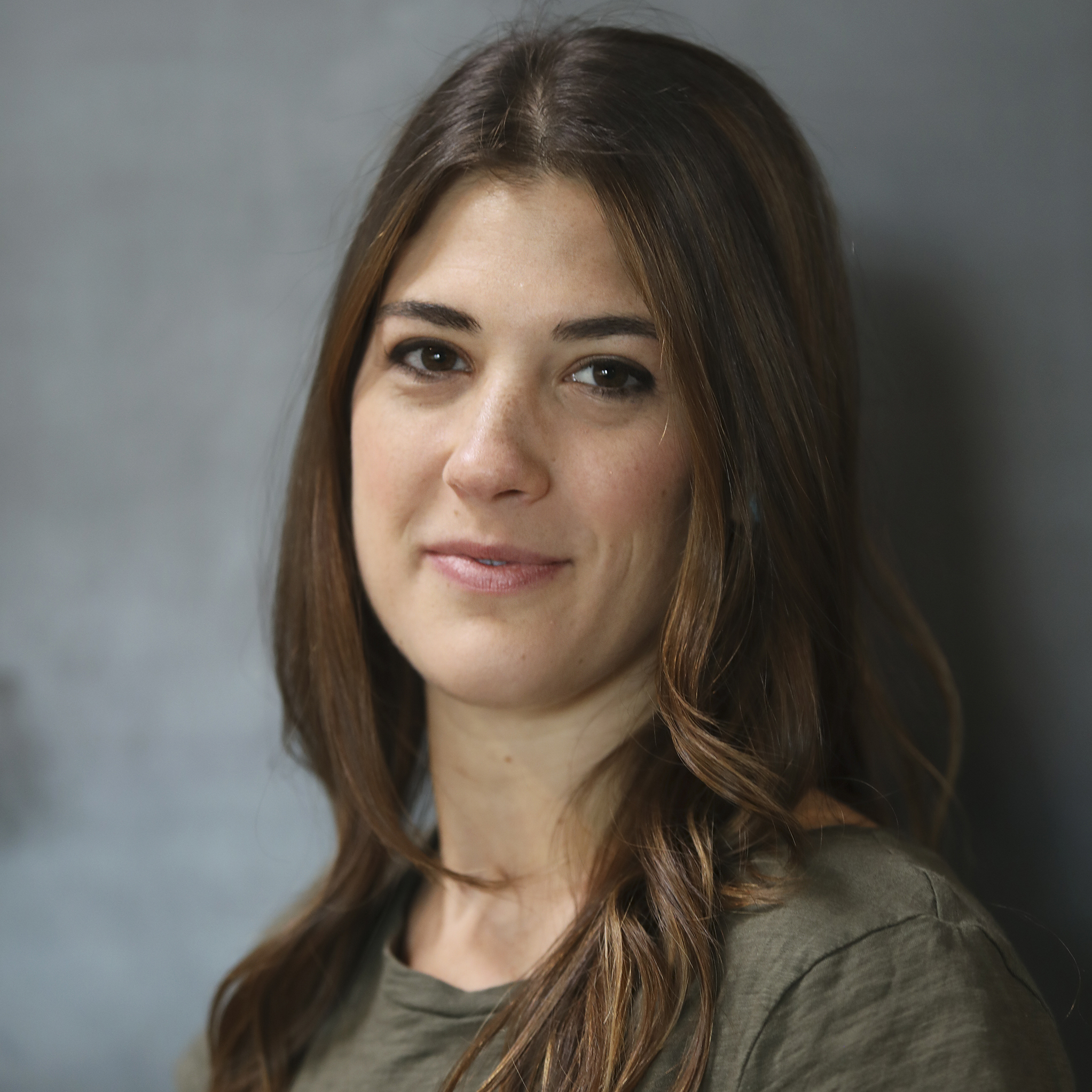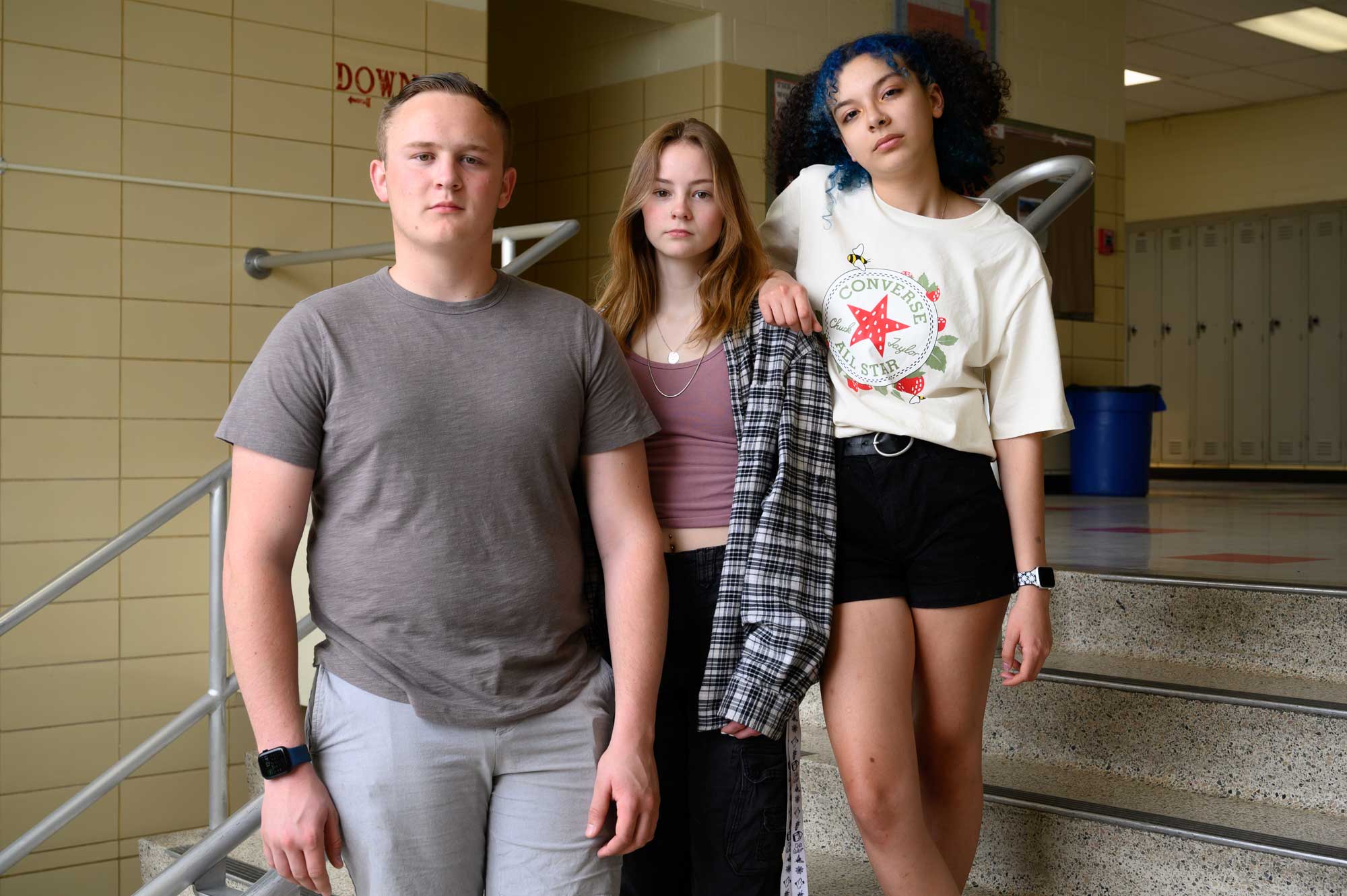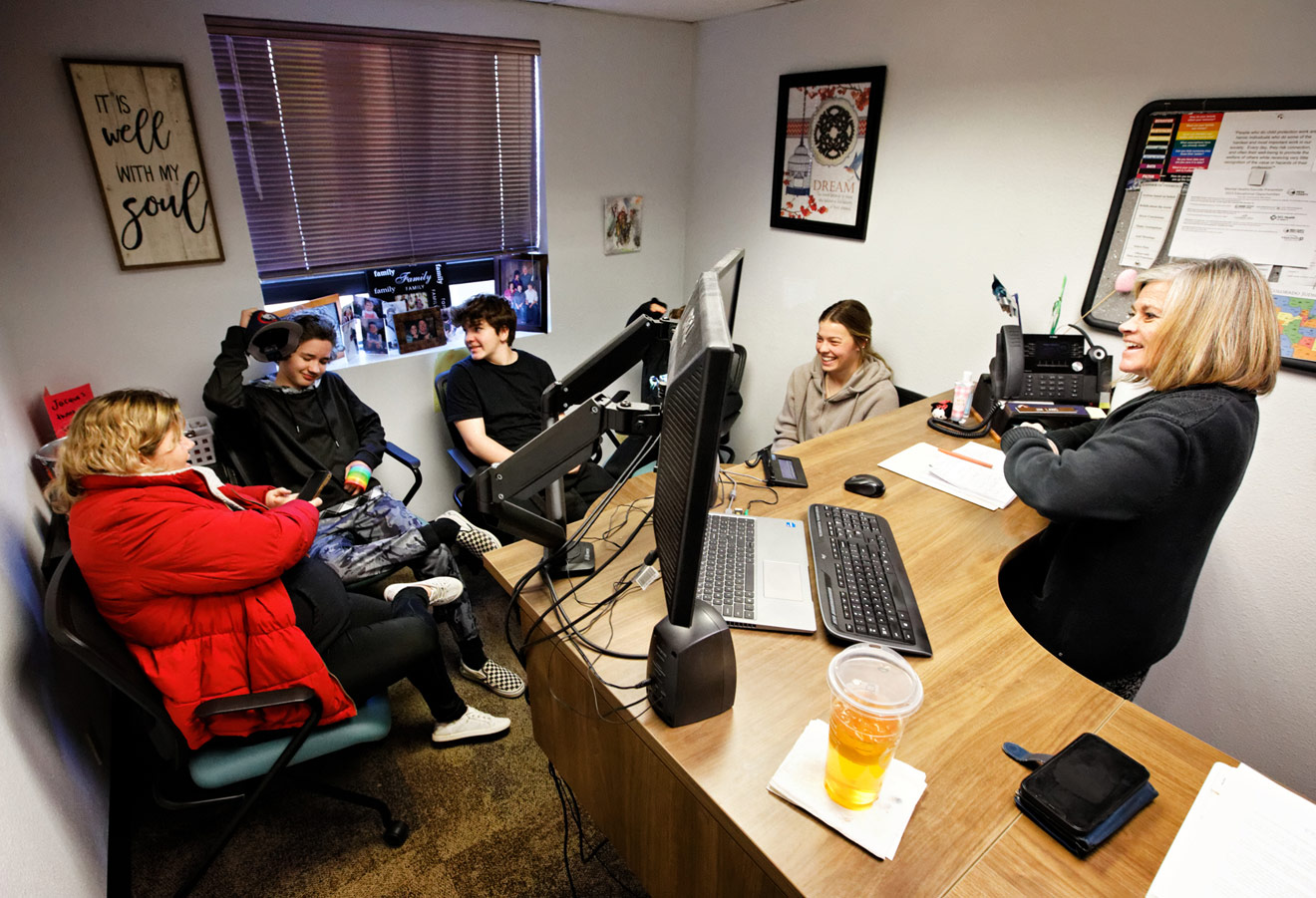Kari Litz can barely keep track of the number of times her son, Dominick Miller, was kicked out of school. There was his first preschool, which said he was too aggressive and noncompliant. A suspension in sixth grade for not listening to the principal. The moves between three separate middle and high schools and various after-school programs.
Litz, who lives in Wheat Ridge, Colo., adopted Miller from foster care when he was 15 months old. “He struggled from the day he arrived at our house,” she says. “I wore a lot of spaghetti in the first few months because it got thrown at me—more so than you expect with a toddler.”
Miller first came on school administrators’ radars in kindergarten, when the principal would regularly call Litz about her son’s behavior. In school, Miller’s struggles with executive functioning (a set of learned skills tied to focus, self-control and prioritization) made it difficult for him to keep track of homework, remember dates and stay on task.
When overwhelmed, “my brain just goes to mush,” Miller says. By the end of second grade, he had been diagnosed with a mood disorder and begun taking medication; he was also put on a behavior plan, which eventually developed into an individualized education plan in fourth grade. By seventh grade, he was failing out.
“He was getting the message that he was bad,” Litz says. (Miller’s diagnoses have since been updated to bipolar disorder and complex trauma.) The teachers and administrators “were acting as if he’s willfully doing these things and he’s not—he can’t help it.”
Though Miller never hurt anyone, he often defied directives from his teachers; he might throw something or, if his arm was grabbed, shove the person off. Whenever that happened, Litz would be called to pick him up or her son would receive in- or out-of-school suspension.
“I was just an antsy, anxious kid and I took it out in anger or sleeping,” Miller says. “I feel like they [the teachers] just didn’t understand what was going on, so they shut down. They didn’t have the training or the experience to know that not every kid fits in a cookie-cutter mold.”
When he started falling asleep in the back of his middle school classes, Litz transferred him to an academic institution focused on neurodivergent students.
Then the cops were called to school.
Toward the end of eighth grade, Miller broke a door, was cited for harassment and received a deferred sentence. The following year, he threw a pot into the school courtyard after a verbal altercation with another student. At 17, Miller started boomeranging in and out of juvenile detention, for probation violations like breaking curfew.
Things continued to spiral from there. Soon after his release from juvenile detention in February 2019, Miller burglarized a car dealership, absconded from the work release program he was sentenced to and wound up with a three-year prison sentence. In 2021, a month after he was paroled, Miller was rearrested for another burglary. Now age 23, he’s currently serving a six-year sentence.
“He keeps getting bounced around,” Litz says. “To this day we’re waiting on some place that won’t give up on him.”
From shuffling between schools and specialized programs to being placed behind bars, Miller’s life so far has been rocky. But his story isn’t all that unusual. The progression from kindergarten troublemaker to inmate is common enough that it has its own name: the school-to-prison pipeline.
***
The school-to-prison pipeline refers to school policies and procedures that may lead students into the justice system. It can mean an over-reliance by administrators on discipline policies ranging from in- or out-of-school suspensions and expulsions to the use of restraints or seclusion rooms. It can also involve a school depending on or turning to law enforcement or armed school resource officers, rather than staff, to handle student discipline issues at school, which may lead to more school-based arrests—”the quickest way from the classroom to the jailhouse,” as the American Civil Liberties Union puts it.
“It sends the message to the child that they’re bad,” says Pam Bisceglia, executive director of AdvocacyDenver, which works to support people with disabilities. “Children who are frequently removed from school for behavior, those same schools, instead of the soft suspension [such as calling parents to pick them up], as they get older, they [the schools] call the police and they have the child ticketed.”
Who receives these punishments is imbalanced. Students of color, LGBTQ+-identifying pupils and those with disabilities are more likely to experience restraint, seclusion and serious discipline—and are then overrepresented in the justice system.
The U.S. Department of Education, for example, estimates that 30% to 60% of incarcerated youth have disabilities. A longitudinal study published in 2018 found that foster care youth like Miller (who is white) are “overrepresented in special education” and “more likely than their peers to experience school discipline events”; an earlier study found that nearly one-quarter of students in foster care had been expelled or suspended at least once. Last year, CBS News reported that “children with documented disabilities were four times more likely to be arrested at school.”
Black students are generally disciplined at a rate that’s three to five times higher than their white peers—a statistic that hasn’t changed much in 50 years, says Kathryn Wiley, PhD, an assistant professor at Howard University’s Department of Educational Leadership and Policy Studies who focuses her research on school discipline and safety. (Wiley received her masters and doctorate degrees from University of Colorado Boulder, and was a research associate at University of Denver.)
That certainly rings true in Denver Public Schools, the state’s largest school district. Colorado Department of Education data show that 81% of students disciplined in the 2022-23 school year were Black/African American or Hispanic/Latino. (“Discipline” means everything from classroom removal to law enforcement involvement.) For context: 51.7% of the district’s student body is Hispanic, and 13.7% is Black.
Statewide, the racial disparities are less obvious than in Denver but still disproportionate. Forty-five percent of all students disciplined statewide in 2022-23 were Hispanic/Latino, 38% were white and 9% were Black/African American. Colorado’s preschool through 12th grade student population overall is 51.2% white, 35% Hispanic/Latino, and 4.6% Black.
“It can leave kids to feel like they don’t belong in school. It contributes to a whole host of problems,” Wiley says of school discipline practices. “It goes on their record. It can turn into a criminal record. It becomes a data point in the school, and then the next principal at the high school sees there’s a suspension and then they form a negative idea about that child, too.”
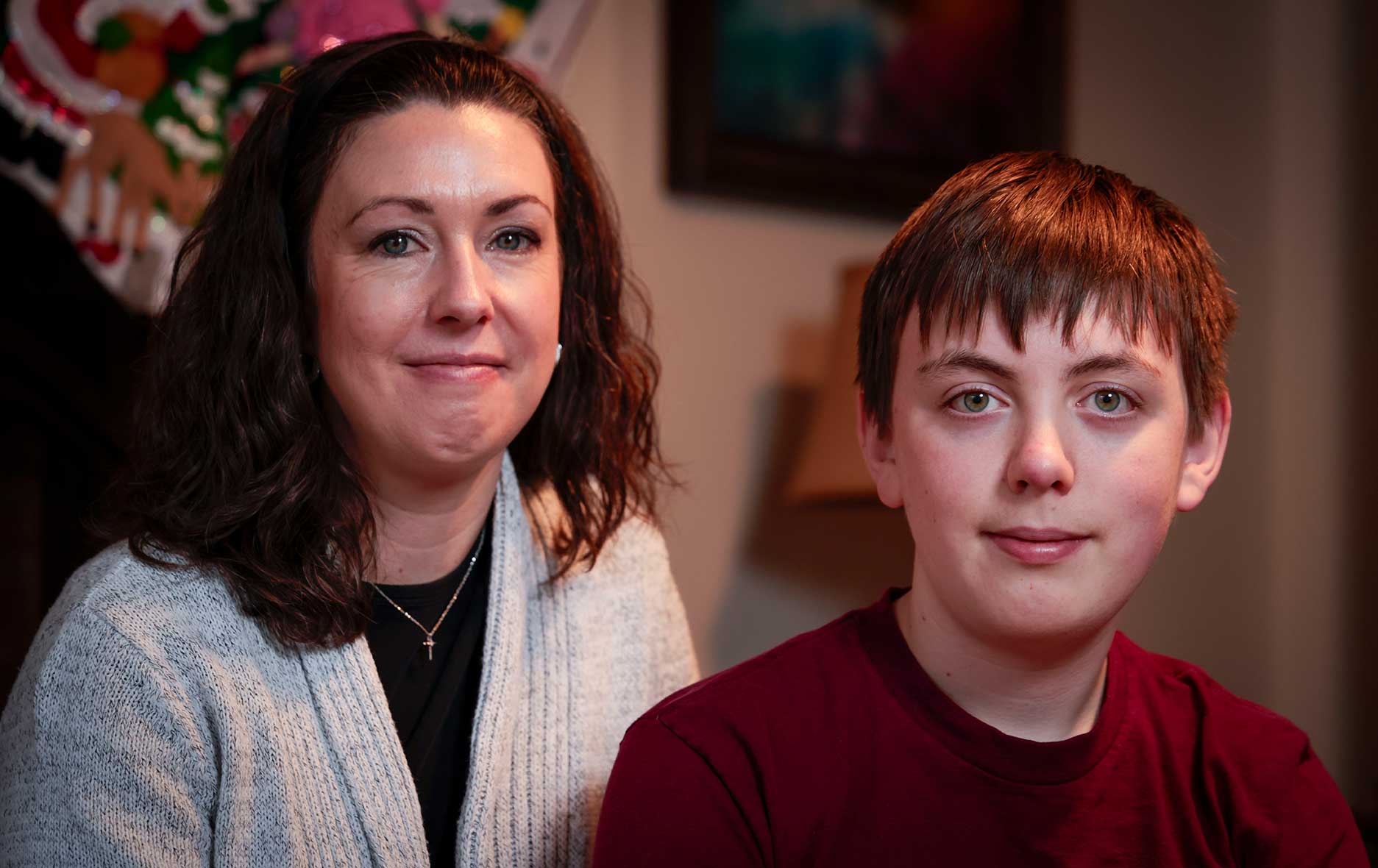
Laura Alford of Colorado Springs with her 14-year-old son, Samuel. At age 12, Samuel, who is on the autism spectrum, was ticketed by police and suspended from school after hitting a teacher with a rubber ruler. He was sent to a diversion program and his academic performance dropped significantly in the incident’s aftermath. Photo by Joe Mahoney / Special to The Colorado Trust
The majority of serious school discipline is also meted out for minor infractions.
A 2019 investigation by ProPublica Illinois found that, across a single school year, there was no documented safety reason for more than one-third of the 20,000 incidents when students were put in seclusion. (The Colorado Trust funds ProPublica work in Colorado.) More than 40% of all law enforcement referrals from Colorado schools in the 2022-23 school year were linked to marijuana violations or “other code of conduct violations,” according to Colorado Department of Education data. During that same time period, 20% of all suspensions were the result of “disobedient/defiant or repeated interference.” Twenty-two percent of expulsions were caused by marijuana violations, while 17% were because of weapon possessions.
“There’s this idea that safety is equated to punishment and that we’re making schools safer when we remove kids or punish kids for their infractions,” Wiley says. “But the reality is that most students are suspended for minor incidents, such as talking back or using a curse word.”
Advocates and parents say ongoing staffing, time and resource shortages, along with a lack of adequate training, has pushed schools to become more punitive and override students’ rights in the name of safety. Colorado, for instance, has “hundreds of vacancies” for special education teachers, per KRDO reporting.
A 2019 paper found that students at schools with higher suspension rates had a 15% to 20% higher chance of being incarcerated as an adult. “School suspensions serve as a negative turning point that places youth at much greater risk of experiencing incarceration as they transition to adulthood,” noted another study.
The federal government has admitted to a lack of adequate data collection on instances of restraint and seclusion in public schools. As for Colorado statistics, “it’s really hard to say because school districts have been required to put together an annual report with this information, but it hasn’t had to go anywhere beyond the district up to this point,” says Emily Harvey, community access and youth advocacy team leader at Disability Law Colorado.
That’s changing. The state passed legislation in 2022 requiring the Colorado Department of Education to collect and compile data from all school districts on in- and out-of-school suspensions, expulsions, students who are handcuffed or restrained, referrals to law enforcement and school-related arrests. Subsequent reports will, for the first time, be required to be posted on the department’s website, starting summer 2024.
“We’re fighting to let kids be kids—giving them the freedom to make mistakes and not be locked up as a result of those mistakes, or not placed in handcuffs or otherwise restrained every time they make a mistake,” says Dana Walters Flores, the Colorado campaign coordinator for the Youth Justice Initiative at the National Center for Youth Law.
***
Christie’s nine-year-old son was diagnosed with autism last year. He started exhibiting what she calls “extreme behaviors” in second grade: kicking and punching holes in the walls, throwing chairs. (She’s requested to withhold her last name and her son’s first name to protect his identity.) He’d had an individualized education plan since preschool and spent most of his time in a special education classroom.
Beginning in kindergarten, he was regularly put into a quiet room at his Highlands Ranch school, though Christie was only informed by administrators on two occasions, both of which were in first grade. When her son would mention it, Christie assumed it was a calming space with beanbags and maybe some sensory toys or soothing music.
She learned the truth during a student art show in May 2022, toward the end of her son’s second grade year. He and one of his special education classmates brought their mothers over to a door in the classroom and pointed out what they called their “torture room.” That’s when Christie discovered the quiet room was actually a small, dark closet with two blue pillows on the floor.
“It just broke my heart,” she says. “I’ve been sending my son to school to get an education where I thought he was safe, and he’s been abused at school. If I locked my kid in a closet at home, I would be in jail.”
Christie filed a formal complaint against Douglas County School District RE-1 in September 2022. Based on its conclusions, the district was required to develop a corrective action plan, provide additional training to staff and update internal procedures. Christie’s son also received an additional 30 hours of specialized instruction and 32 hours of mental health services.
Christie’s son is white, but a Douglas County School District monitoring report released in May showed that 41% of Black students were disciplined during the 2021-22 school year in comparison to 16% of white students. In August, three families of Black and biracial students filed a federal civil lawsuit against the district alleging “pervasive racism.”
According to Colorado law, seclusion is still permissible “in an emergency and with extreme caution” after less restrictive options have failed or are determined to be ineffective, but it cannot be used as a form of punishment or discipline or as part of a behavior modification plan (the same goes for restraint). The state’s updated 2022 legislation also outlines that seclusion rooms cannot be spaces otherwise used for storage, custodial or office space and that students must be continually monitored, either through a window or a video camera. Such rooms have recently come under public scrutiny after it was discovered that McAuliffe International School in Denver was violating DPS policy by secluding students without proper supervision in rooms that were either locked or held shut.
When Wiley was working as a researcher at the University of Denver, she observed students being sent to empty rooms as punishment or given tasks to do “as a penalty.”
“That room never empties out,” she says. “It’s kind of an ‘if you build it, they will come’ situation. If you’re a school principal and you authorize a classroom where you can send kids during the school day, people will use it.”
Whether students are removed from the classroom via seclusion, restraint, expulsion or suspension, the result is a significant impact on learning.
U.S. public school students lose more than 11 million educational days to out-of-school suspensions each year, according to a 2020 report by the Center for Civil Rights Remedies and the Learning Policy Institute. Black students are most impacted at all levels of primary education: For every 100 enrolled students, Black secondary school students lost 82 more days of instruction than their white peers due to out-of-school suspension, according to the report; for Black boys specifically, it was 132 days. At the elementary school level, it was a 20-day disparity, and 51 days across the full K-12 spectrum.
Nationally, people who are incarcerated are significantly more likely to have low levels of literacy. Students who are not reading at grade level by third grade are four times less likely to graduate from high school, a reality that is also strongly correlated to justice involvement.
“There are so many kids who walk into a classroom and they can’t read, and when they hit third grade they start acting out,” says Erin Pier, co-director of the Transformative Justice Project at the Colorado Juvenile Defender Center. “It is easier to be the kid who is silly, who is causing trouble, and get into trouble for that than to be the kid who gets into trouble because they can’t read.”
Christie says her son “hardly went to school” last year because of how often administrators were calling her to pick him up. He was also suspended for a total of seven days.
Wheat Ridge mother Litz said she realized from third-grade standardized tests that her son wasn’t actually learning very much. “As long as he doesn’t act out, everybody’s happy and whether he gets an education or not is irrelevant,” she says of how she perceived the attitude of staff at her son’s school.
For students with a history of trauma, these disciplinary responses can exacerbate existing mental health issues. They can also affect their parents’ health outcomes. A study published in October, which was based on interviews with 50 parents of Black and white children with diagnosed disabilities, found that parents were so traumatized by their children’s experiences with out-of-school suspension, seclusion and restraint that the parents developed depression, hypertension, stroke, stress-induced vomiting and other conditions.
Laura Alford, a mother in Colorado Springs, whose son Samuel experienced multiple suspensions, still has physical symptoms two years after the police were called on her 12-year-old.
“I still cringe when my cell phone rings… I still have higher levels of anxiety. I have heart palpitations,” she says. “I feel physically like I still haven’t fully recovered.”
***
Prior to her role at the Colorado Juvenile Defender Center, Pier spent 12 years working as a school psychologist, half of which was in Aurora Public Schools. During her tenure, she watched a school resource officer hold kids on the ground, “tackle” students and handcuff others. Some were put into cop cars.
“These kids get written off as the ‘problem child.’ Rather than giving them the second chance, rather than repairing the relationship with the kid, a lot of these kids get a target on their back after the first [incident] and pushed out of the classroom effectively,” she says. “[We were] directly responsible for getting them started on the school-to-prison pipeline.”
At least one of the students is now serving a 40-year prison sentence.
Police officers are not always directly involved in school discipline, but they can be. In June, the Denver School Board, which oversees the county’s school district, voted to allow officers back into its schools, reversing a 2020 policy barring them. The decision was largely a response to the fatal shooting of a student and nonfatal shooting of two administrators at East High School in separate incidents earlier this year. Some advocates and parents have voiced concerns about the policy reversal because students of color are more likely to be ticketed or referred to law enforcement.
“The more interactions students, and especially students of color, have with law enforcement, the more likely they’re going to end up in the justice system,” agrees Krista Spurgin, executive director of Stand for Children Colorado, a nonprofit focused on education equity and racial justice. “We understand the need to manage discipline, but if you don’t have the lens of understanding of what it means to have a student interact with law enforcement in a negative way in a school building and what that can lead to, we’re not really being holistic in the approach to keeping students safe. Those are short-term solutions that are causing long-term problems for our students.”
In December 2021, Laura Alford’s son Samuel—who is on the autism spectrum and attends school in Academy District 20 in Colorado Springs—was suspended at age 12 for hitting a teacher with a rubber ruler. It was the latest in a long list of suspensions during his seventh-grade year, but this was the first time that police got involved.
When Samuel realized the teacher was going to press charges, he sat down in the corner of the room and cried. He doesn’t remember anyone trying to comfort him. “I thought I’d go to jail,” he recalls.
Later that day, an officer came to his house, wrote him a ticket and had Samuel sign it.
“I didn’t understand why the school would press charges against him,” Alford says. “This is supposed to be the school that’s supporting him. He has a disability. I thought they understood that he had a disability. It made no sense in my brain why they would press charges against a 12-year-old.”
Samuel, who is white, was sent to a diversion program for minors, which he completed; his record was expunged. But the incident “changed the whole trajectory of his education,” Alford says. “Up until that point, he had very good grades, all As and Bs. The semester following the charges, he was failing every single class. Our family was just traumatized by the whole thing.”
Looking back, Samuel, now 14, recognizes that his anger response—often, throwing things or flipping desks over—tended to worsen when he was punished rather than given the space to work through his feelings. “I’m starting to see a pattern,” he says. “When there was discipline, my anger was more violent—and when there was no discipline, there was just kind of talking, it was less [violent].”
Samuel is starting to think about going back to public school. He doesn’t think too much about what happened two years ago and feels he’s matured enough to be able to try again.
It’s a different story for Dominick Miller, who has several years remaining on his prison sentence.
“I think it all stems from not being given the help that I needed at school at the most important time,” he says. “No one else’s decisions and no one else’s lack of support can put me here [in prison]. My own issues put me here. But I think it would have helped to have that stability and support in schools.”
